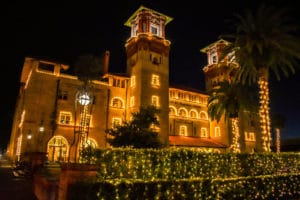|
The approximate arrival time for El Galeón into St. Augustine has been delayed until 5 p.m. Tuesday, May 21.
|
|
St. Augustine, FL (May 21, 2013) – Today’s arrival time for El Galeón has been delayed until 5 p.m. If that time should change, another release will be issued.
Media are invited to film the ship’s arrival from the St. Augustine Municipal Marina. Special access has been granted for video/photo to be shot from the elevated back deck of the Marina office. Other suggested film locations are the Marina dock and the Bridge of Lions.
About El Galeón
El Galeón will make a port stop in St. Augustine at the Municipal Marina as part of the Viva Florida 500 Voyage in commemoration of the
500th anniversary of Ponce de Leon’s naming of La Florida. The ship will be open for tours from May 23 – June 9.
While in port, the 170 foot, 495 ton authentic wooden replica of a galleon that was part of Spain’s West Indies fleet will be open for public visits. Information and tickets for El Galeón are available at www.vivaflorida.org or at ticket booths at Ripley’s Red Train Tours and the St. Augustine Visitors Information Center. Tickets are $8 for children age 12 to 6 years and $15 for adults. Children age 5 and under are free. The ship will be open daily from 9 a.m. to 6 p.m. in the St. Augustine City Marina.
El Galeón’s port visit in St. Augustine is particularly significant as the first galleon to arrive in the oldest city was the flagship of founder Don Pedro Menendez de Aviles. Named the San Pelayo, the 650-ton ship was one of the most powerful ships of its day. It was the most important of several ships that carried 800 colonists and supplies to St. Augustine, establishing the first permanent European settlement in the United States in 1565. The San Pelayo was an enormous vessel – it carried 77 crewmen, 18 gunners, and transported 317 soldiers and 26 families, as well as provisions and cargo (including cattle). Her armament was iron cannons and artillery. She was built in 1564 just outside the gated city of Aviles, Spain (Menenedez’s birthplace). Recently, researchers in Seville found the construction plans for the San Pelayo.
The St. Augustine story is a compelling narrative of exploration, innovation and enduring spirit. It is marked by many milestones, including the first permanent European settlement in the United States, founded in 1565, and the first port to develop into a center of trans-Atlantic trade and commerce. St. Augustine’s bay is indeed America’s oldest seaport.
Located midway between Daytona Beach and Jacksonville, Florida’s Historic Coast includes historic St. Augustine, the outstanding golf and seaside elegance of Ponte Vedra Beach, 42 miles of pristine, Atlantic beaches – the same beaches that greeted Ponce de Leon in 1513 when he discovered and named La Florida, an area whose boundaries encompassed what would later become the eastern United States. For more information on events, activities, holiday getaway and vacation opportunities in St. Augustine, Ponte Vedra & The Beaches, go to the Visitors and Convention Bureau website at www.FloridasHistoricCoast.com, become a fan on Facebook (St. Augustine, Florida) or call 1.800.653.2489.
|

St. Augustine Nights of Lights
Take the Best St. Augustine Christmas Getaway
Planning a St. Augustine Christmas getaway is a sure-fire way to bring undeniable festive charm to your holiday season. Visitors from











